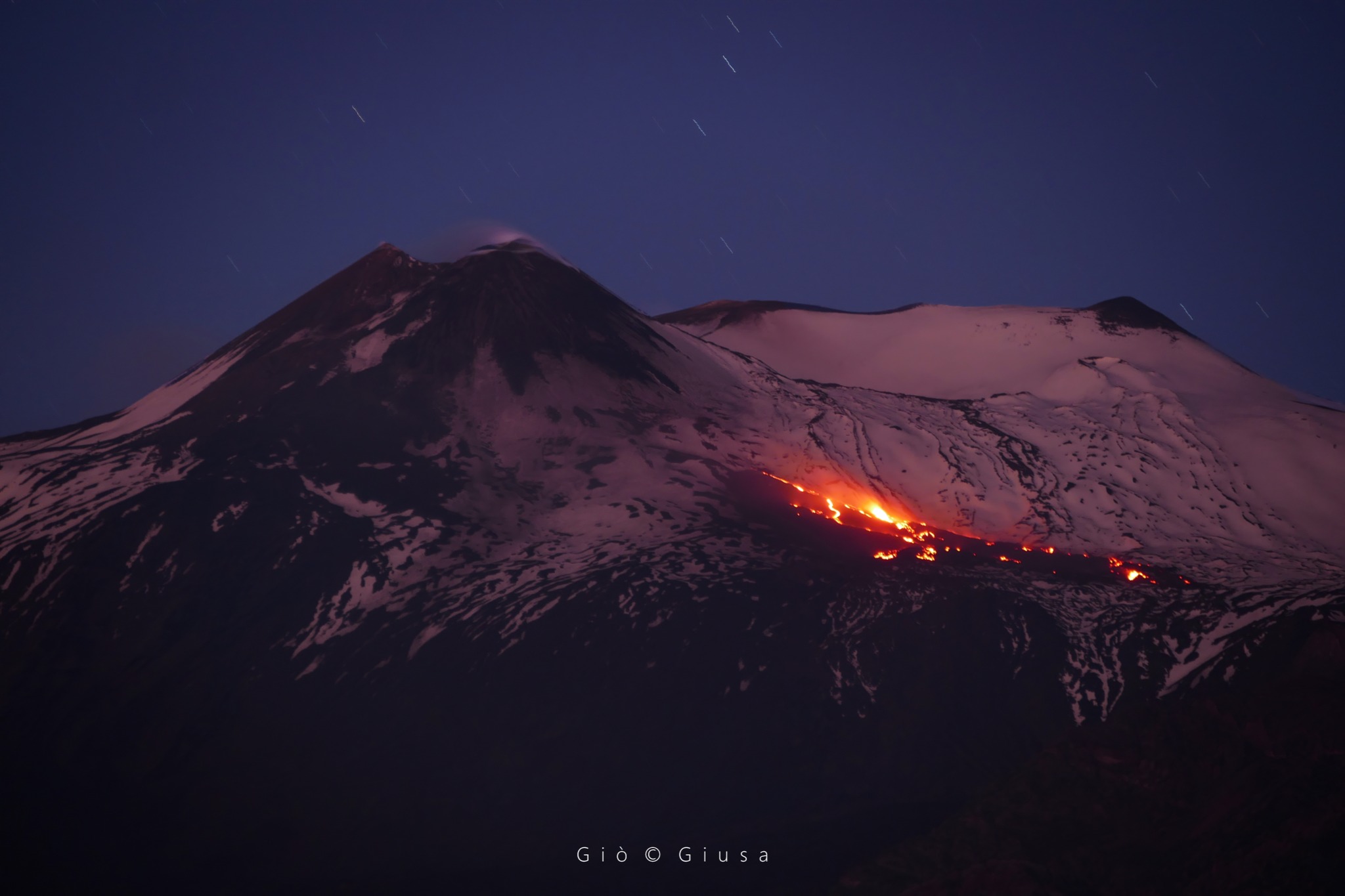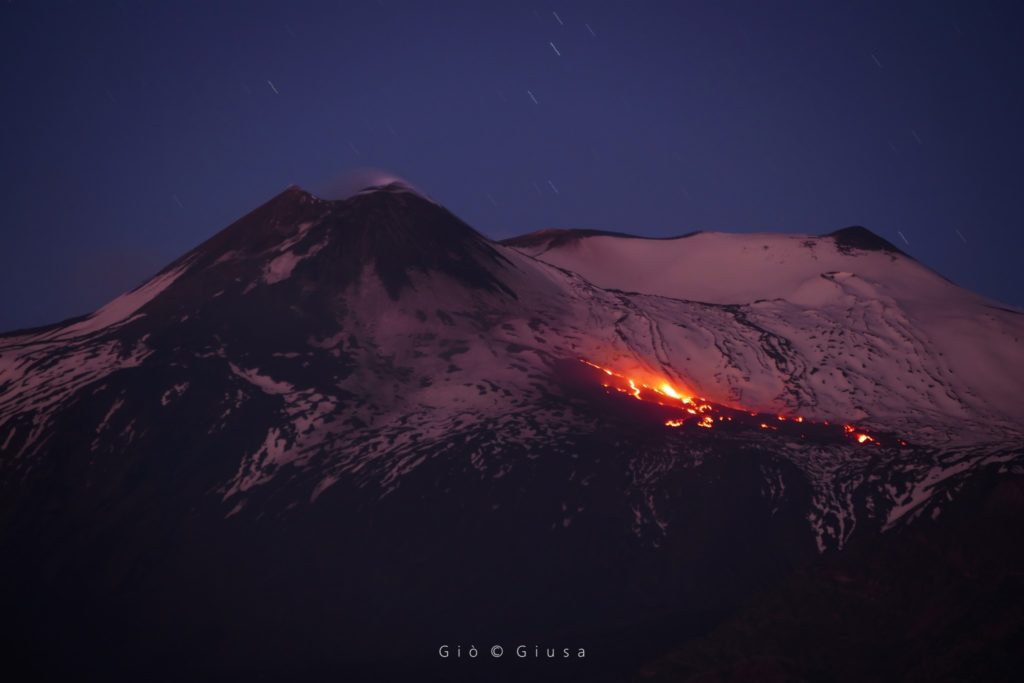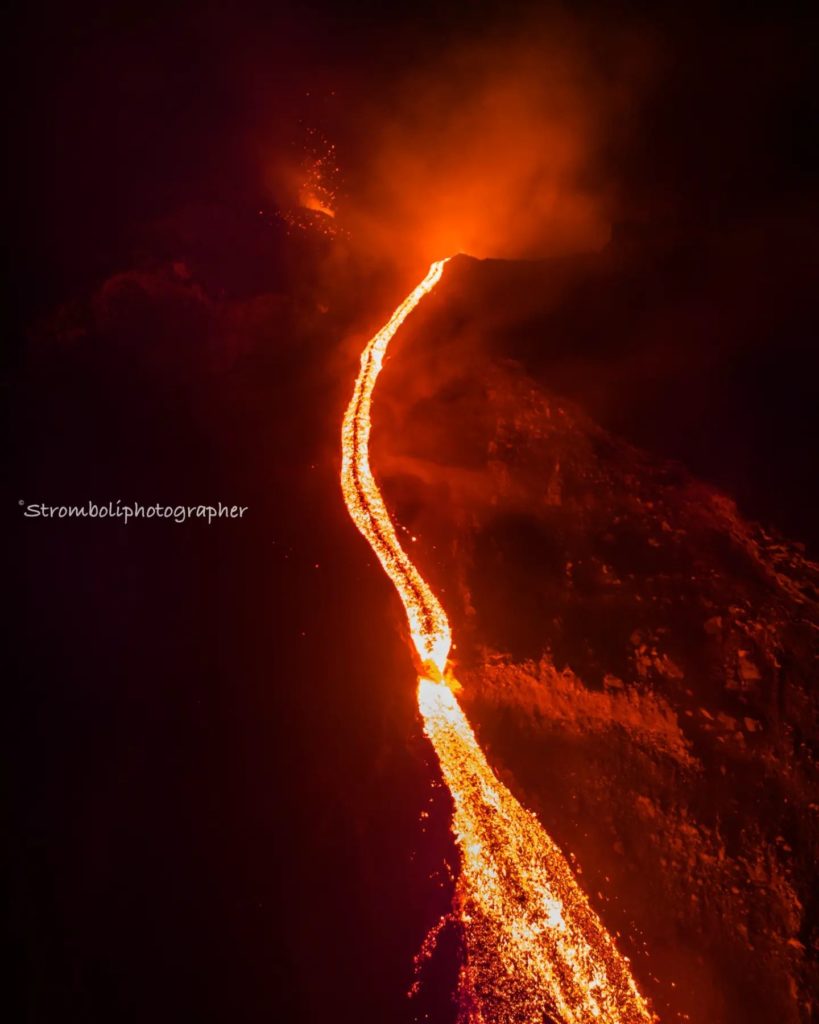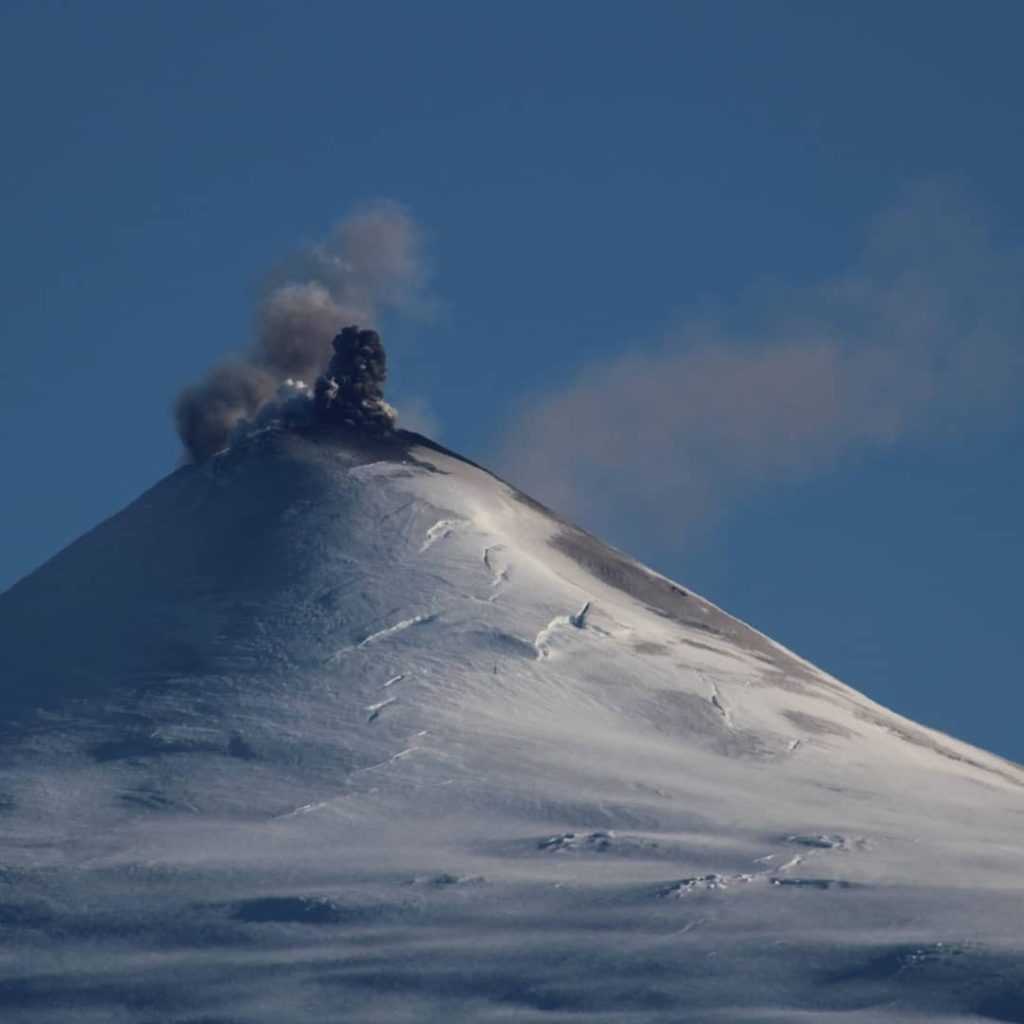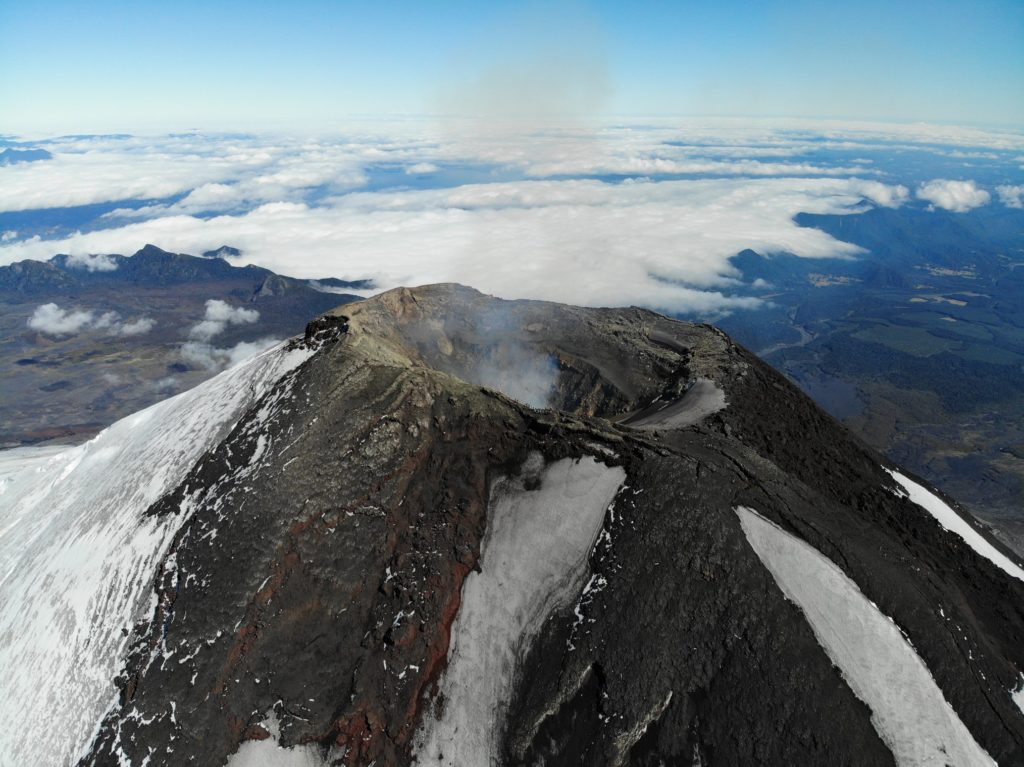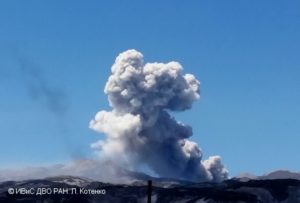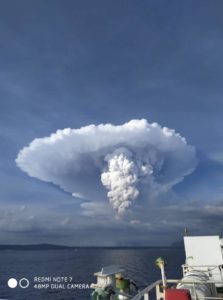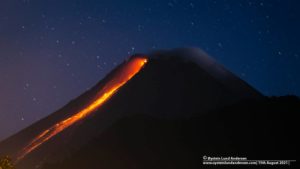December 29 , 2022.
Italy / Sicily , Etna :
WEEKLY BULLETIN, from December 19, 2022 to December 25, 2022, (issue date December 27, 2022)
ACTIVITY STATUS SUMMARY
In the light of the monitoring data, it is highlighted:
1) VOLCANOLOGICAL OBSERVATIONS: Effusive activity with lava flows in the Léon Valley, degassing at variable speed at the level of the summit craters.
2) SEISMOLOGY: Low seismic activity due to fracturing; average amplitude of tremors at average levels; location of the springs between the Bocca Nuova and Southeast craters.
3) INFRASOUND: Low infrasound activity; the localized springs were located in the Bocca Nuova crater area
4) GROUND DEFORMATIONS: Ground deformation monitoring networks do not detect significant variations
5) GEOCHEMISTRY: SO2 flux at an average level
The soil CO2 flux values recorded last week are average values.
The CO2 of the water table (EtnaAcque Network) presents variations which are part of the seasonal variability of the site.
Helium isotopes show a slight increase (12/15/2022), The data is at high values.
6) SATELLITE OBSERVATIONS: The thermal activity observed by satellite in the summit zone was of a high level in correspondence with the effusive eruption in the summit zone.
VOLCANOLOGICAL OBSERVATIONS
During the week of observation, the monitoring of the volcanic activity of Etna was carried out by analyzing the images of the network of surveillance cameras of the INGV, Osservatorio Etneo.
During the observation period, the effusive activity that began on November 27 ca continued. from the effusive mouth which opened at the northeast base of the southeast crater at an altitude of about 2800 m a.s.l. Similar to the previous weeks, the activity showed a variable, sometimes impulsive effusive regime, which determined the development of a lava field characterized by the overlapping of different lava flows with expansion in the Valle del Leone and the Valle del Bove. From the integration of thermal images from INGV-OE surveillance cameras and Sentinel-2 L2A satellite images (ESA Sentinel Hub), it was observed that the most advanced lava front on December 20 was at an altitude of about 2500 m. , on December 23 at an altitude of 2250 m, and on December 25 at an altitude of 2150 m.
With regard to the summit craters, the activity was characterized by a variable rate degassing mainly from the Bocca Nuova crater.
Source : INGV.
Photo : Gio Giusa ,
Alaska , Semisopochnoi :
AVO/USGS Volcanic Activity Notice
Current Volcano Alert Level: WATCH
Previous Volcano Alert Level: ADVISORY
Current Aviation Color Code: ORANGE
Previous Aviation Color Code: YELLOW
Issued: Wednesday, December 28, 2022, 11:46 AM AKST
Source: Alaska Volcano Observatory
Notice Number: 2022/A1518
Location: N 51 deg 55 min E 179 deg 35 min
Elevation: 2625 ft (800 m)
Area: Aleutians
Volcanic Activity Summary:
Ash emissions resumed over the past 24 hours at the active north crater of Mount Cerberus. Minor ash deposits on the flanks of Mount Cerberus were observed on fresh snow extending up to ~1 km (~1000 yards) from the vent in web camera images over the past day. No ash plumes have been observed in web camera or satellite imagery, but a persistent steam plume rising up to 5,000 ft above sea level from the active crater may now be carrying minor volcanic ash within it. The observation of ash deposits follows increased seismicity, including seismic tremor, in the past week. This activity is similar to eruptive activity observed over the past year at Semisopochnoi, but not since November 7. The Alaska Volcano Observatory is therefore raising the Aviation Color Code to ORANGE and Volcano Alert Level to WATCH.
Small eruptions producing minor ash deposits within the vicinity of the active north crater of Mount Cerberus and ash clouds usually under 10,000 ft (3 km) above sea level have characterized the recent activity and more ash-producing events could occur again with little warning.
Semisopochnoi is monitored by a local seismic and infrasound network, local web cameras, regional lightning and infrasound sensors, and satellite data.
Source : AVO.
Photo : Semi CEPE webcam
Italy , Stromboli :
Statement on Stromboli activity, 27 December 2022, 19:20 (18:20 UTC).
The National Institute of Geophysics and Volcanology, Osservatorio Etneo, communicates that according to the observations made through the surveillance cameras of the INGV-OE, it is observed that the eruptive scenario described in the previous press release remains almost unchanged.
The effusive activity continues to feed the lava flows that extend along the erosion channel formed on the Sciara del Fuoco following the effusive activity of October 9th. Strombolian activity and spattering continues from the North Crater area.
Regarding the average amplitude of the volcanic tremor, a slight increase on moderately high values was observed during the morning.
Data from stress monitoring networks on the island showed no significant changes in the past 24 hours.
Statement on Stromboli activity, December 28, 2022, 20:08 (19:08 UTC).
The National Institute of Geophysics and Volcanology, Osservatorio Etneo, communicates that from the analysis of the images of the surveillance cameras, it can be observed that since the afternoon, the feeding of the lava flow described in previous press releases has gradually decreased and currently the flow is cooling. Strombolian and spatter activity continues in the North and Center-South crater area with explosions mainly represented by fine materials (ash).
The average amplitude of the volcanic tremor has returned to average values, remaining at this level over the past few hours.
Data from stress monitoring networks on the island showed no significant changes since the last update.
Further updates will be communicated soon.
Source : INGV.
Photo : Stromboli stati d’animo.
Chile , Villarica :
Special Report on Volcanic Activity (REAV), La Araucanía and Los Ríos regions, Villarrica volcano, December 24, 2022, 08:45 a.m. local time (mainland Chile)
The National Geology and Mining Service of Chile (Sernageomin) announces the following PRELIMINARY information, obtained through the monitoring equipment of the National Volcanic Monitoring Network (RNVV), processed and analyzed at the Observatory of Volcanoes of the Southern Andes (Ovdas):
On Saturday December 24, during the morning, the monitoring stations installed near the Villarrica volcano recorded a VT type earthquake, with a magnitude of 2.4 ML, an increase in Strombolian activity, manifested by the occurrence explosions at altitudes below 100 m and emissions of ballistic pyroclasts over a maximum distance of 400 m from the crater in a southwest direction.
The characteristics of the earthquake, after its analysis, are as follows:
ORIGINAL TIME: 02:23 local time (05:23 UTC)
REDUCED DISPLACEMENT: 14.3 (cm*cm)
ACOUSTIC SIGNAL: 1.5 Pascals (Pa) reduced to 1 km
The characteristics of the activity associated with the event are as follows:
MAXIMUM HEIGHT OF THE COLUMN: 80 m above the point of emission
DIRECTION OF DISPERSION: 400 meters towards the South-West side (SW)
COMMENTS:
With the continuous seismic activity, with similar parameters to the previous hours, there is a white degassing with an altitude of less than 200 m and a direction of dispersion towards the North-West.
The volcanic technical alert is maintained at the Yellow level.
Seismology
The seismological activity of the period was characterized by the recording of:
A continuous tremor signal with energy values estimated from the RSAM between 0.8 and 1.0 µm/s, values considered low. This tremor signal had two dominant frequency ranges, between 1.0 and 1.2 Hz and between 1.8 and 2.0 Hz.
9 VT-type seismic events, associated with rock fracturing (Volcano-Tectonics). The most energetic earthquake presented a value of local magnitude (ML) equal to 1.9, located 4.4 km east-southeast of the volcanic edifice, at a depth of 4.3 km from the crater.
12853 LP-type seismic events, associated with fluid dynamics within the volcanic system (Long Period). The size of the largest earthquake assessed from the Reduced Displacement (DR) parameter was equal to 42 cm2.
996 seismic events of the TR type, associated with the dynamics maintained over time of the fluids within the volcanic system (TRemor). The size of the largest earthquake assessed from the Reduced Displacement (DR) parameter was equal to 29 cm2.
During the fortnight assessed, the volcanic system initially showed a slow trend of increasing seismic energy until December 12. During this period, Strombolian explosions were recorded which emitted ballistic projections in the area near the crater. On December 12, a sharp drop in the seismic energy of the volcano was observed, probably associated with abrupt changes in the state of the pyroclastic crust and changes in the geometry of the outlet conduit. After that, the seismic energy presented a more stable value at rsam values. close to 1.1 um/sec and an apparent decrease in the frequency of explosions with ballistic ejections outside the crater.
However, due to the strong recurrence of seismic signals and the presence of constant incandescence, the volcano is estimated to remain above its base threshold.
Source : Sernageomin
Photos : volcanologia en chile , Take a Way.

